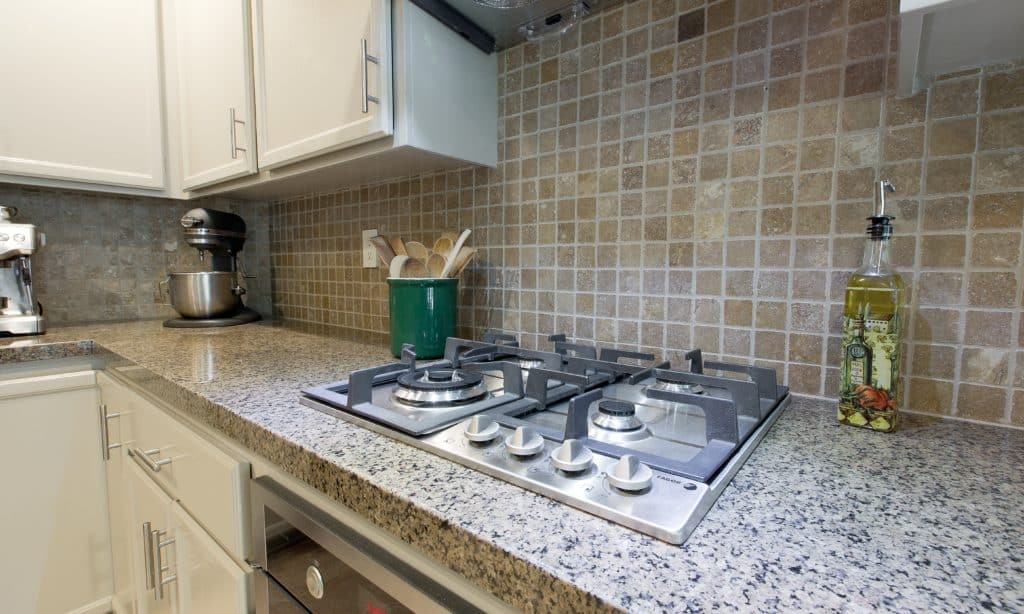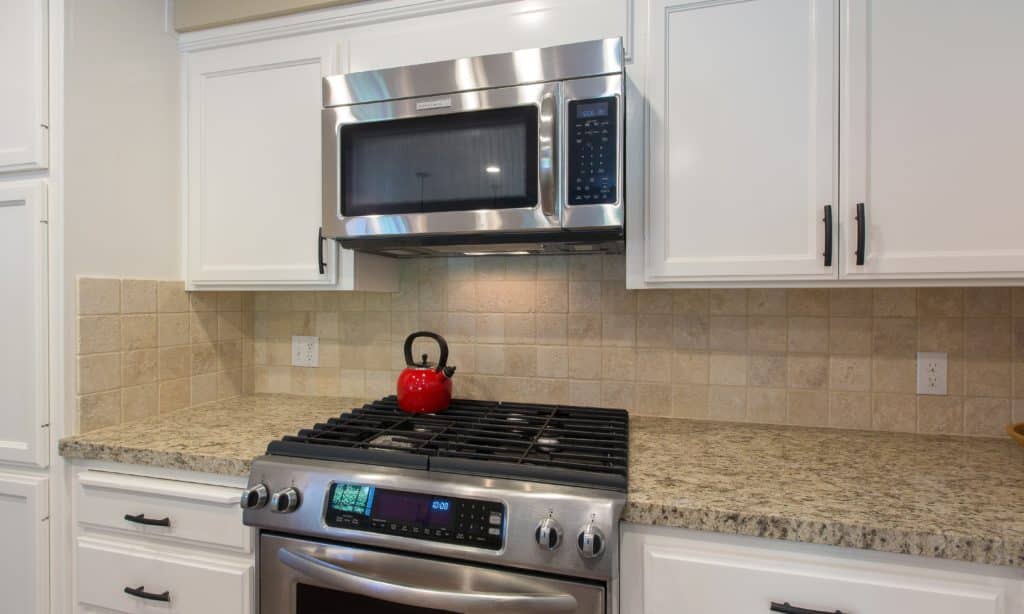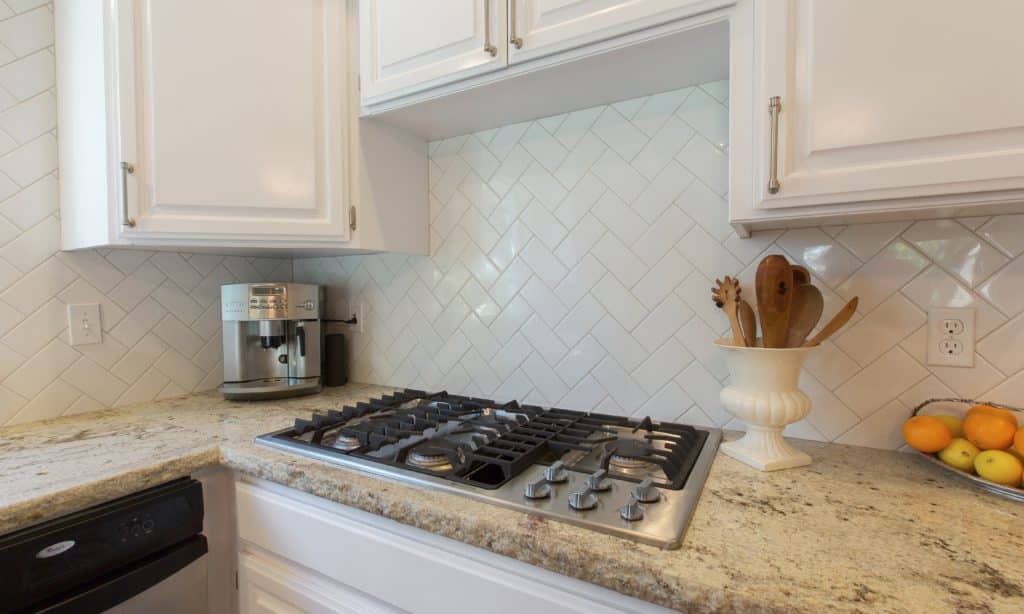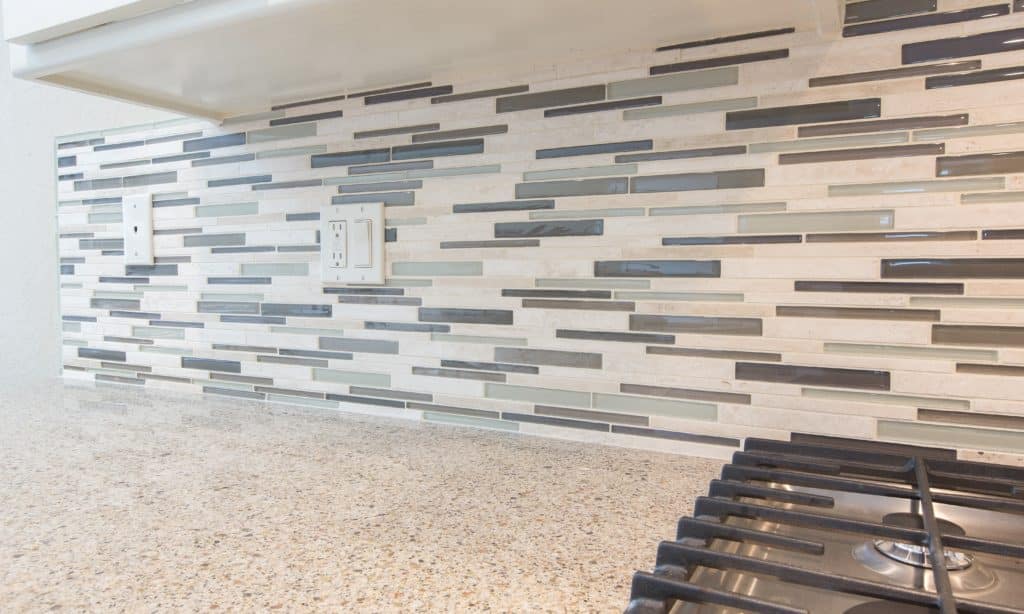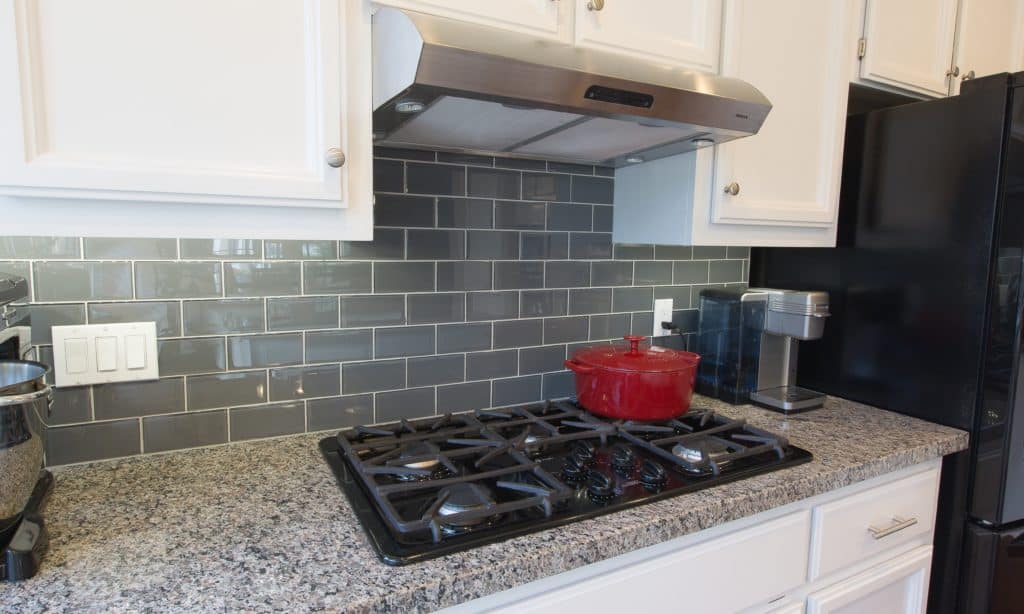Last week we kicked off this blacksplash blog series on backsplash design in celebration of September, which is clearly and unequivocally known as National Backsplash Month!
In part 2 of the series, we’ll take a look at backsplash materials. While there are literally dozens of materials available (solid surface, natural stone slab, engineered slab, tin, drywall and the like) this post will focus on the most common kitchenCRATE decorative backsplash materials: tile. Off we go!
Natural Stone
What is it: As the name implies, a natural stone tile backsplash is just that, natural stone. It’s literally quarried stone products cut into tile-sized pieces, ranging from 1/2″ x 1/2″ all the way up to large 12″ x 12″ tiles, perhaps even larger. Common natural stone materials are travertine, slate, marble, and granite. Two categories of natural stone tile are “honed” and “tumbled.” “Honed” tile are smooth, the natural pits and holes are filled and the edges of the tile are true 90-degree edges. “Tumbled” tile, conversely, have a rougher, more natural surface, feature the original pores and holes and have rough, irregular edges.
Advantages: The advantage to natural stone is the variety of available colors and textures. It truly looks “natural,” and no two tiles are alike. It can also have a higher degree of “richness” and look more “high-end” than man-made tiles. We say “can,” because some man-made tiles look almost identical to natural stone…
Disadvantages: Natural stone is susceptible to staining, especially if a dark liquid (red wine, spaghetti sauce, etc.) comes in contact with a highly porous, light-colored stone. For this reason natural stone backsplashes should be sealed every 6-12 months using an “impregnating sealer” like Miracle 511. Natural stone also takes longer to install, and thus costs a bit more on the labor side, because the tile setter must plan out the tile layout in detail to ensure a blend of colors and tones. Natural stone also tends to cost more per square foot, and the smaller the tile the higher the price.
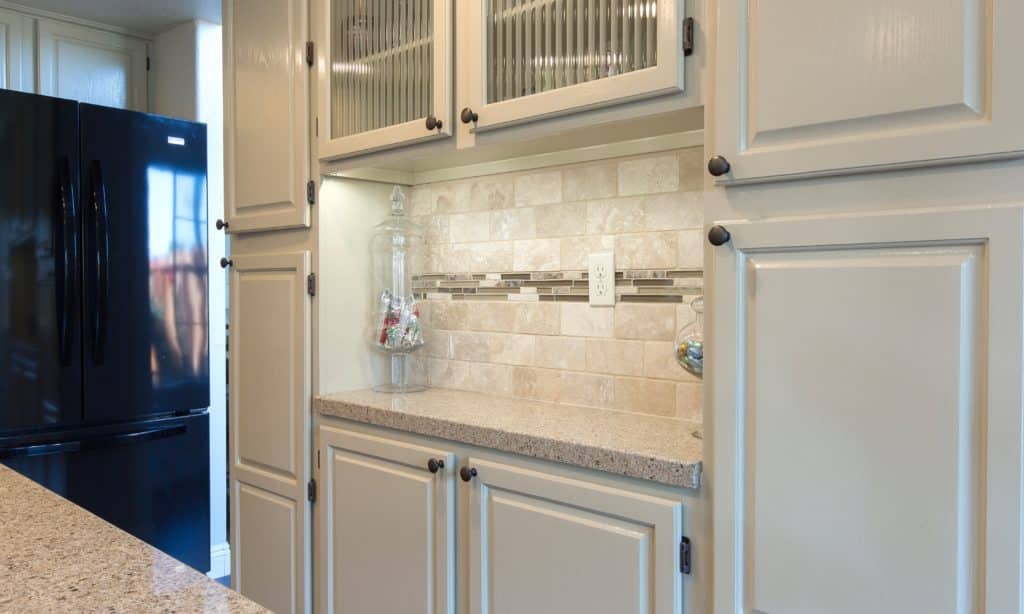
This backsplash: Bedrosians Torreon 3 x 6 tumbled travertine in a brick-set pattern with glass accent strip.
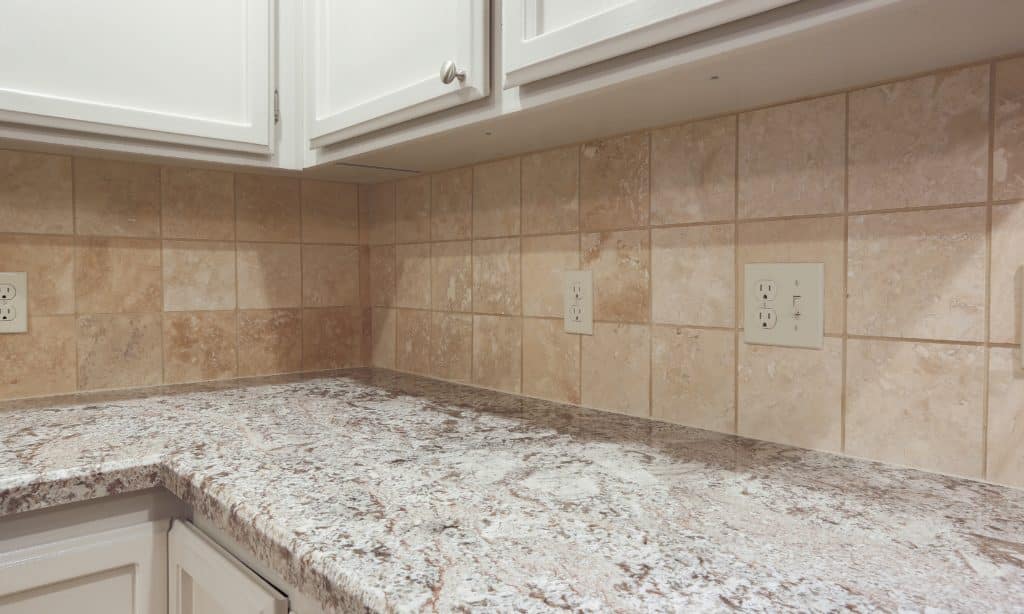
This backsplash: Bedrosians Mediterranean Beige 6 x 6 honed travertine tiles in a straight-set pattern.
Glazed Tile
What is it: Glazed tile is a man-made tile with a hard, durable finish. Glazed tile can be either ceramic or porcelain and can have varying levels of gloss. (High-gloss or “matte” are the most common.) Unlike natural stone, glazed tile typically comes in a smooth, regular, “honed” condition, with straight edges and a non-porous surface.
Advantages: Glazed tile are very durable. Their surface wipes clean using mild soap and water and since they are non-porous nothing can seep into them to create stains. Glazed tile are also more cost-effective in both the labor and material. Due to uniformity in color and size, the tile setters set glazed tile quickly, thus reducing the labor cost. And since the tiles are man-made and mass-produced, the material cost per square foot tends to be lower.
Disadvantages: Glazed tile does not have the “richness” that natural stone, glass or metallic tile have. It’s also more specific to either a modern, cutting edge design or a classic, subway-tile type of design. These are the only real disadvantages.

This backsplash: Daltile Arctic White 3 x 6 matte tiles with glass accent tiles in a brick-set pattern.
Glass / Metals Tile
What is it: Glass and metal tiles are just that, tiles made from unusual materials like glass, recycled glass, aluminum, tin or some other type of alloy. We’re lumping them together in the same category because they share some traits, like a higher cost, more modern look and typically a fairly “intense” pattern. They can range from larger tile (like 4″ x 12″) to small 1/2″ x 1/2″ mosaics, but typically they’re used as an accent in conjunction with a more muted “field” tile.
Advantages: The look! Glass and metal tiles look “rich,” modern, high-class and expensive. They’re eye-catching and modern. They also introduce a unique material to your design that may tie in with other elements of your kitchen, like the plumbing fixtures, appliances or pulls.
Disadvantages: The cost! Glass and metal tile can be very expensive, which is one reason why they’re used more as an accent than as a “field” tile. A square foot of a glass and metal mosaic blend can cost up to $75, as opposed to $2-5 per square foot for a glazed or natural stone tile. The glass and metal tiles also take longer to install because they are usually in mosaic “sheets” that are very time-consuming to install perfectly.
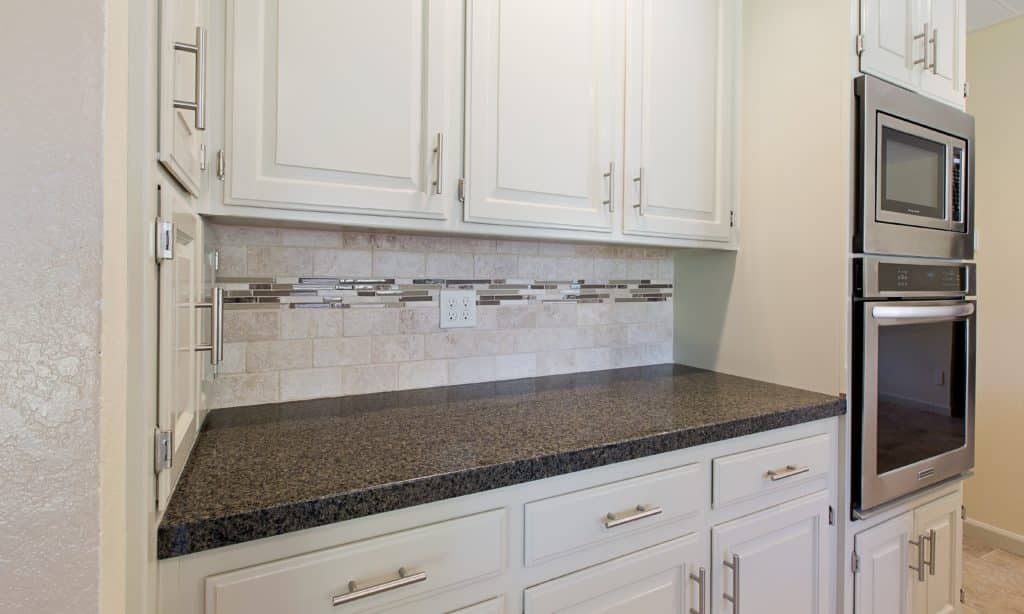
This backsplash: Bedrosians Mediterranean Beige 3 x 6 travertine tiles in a brick-set pattern with an accent strip of Eclipse Espresso glass and stone blend tiles.

This backsplash: Emser Ancient Tumbled Beige 4 x 8 travertine tiles in a brick-set pattern with an accent of Confetti Oval Mosaic blend metal blend tiles.
Conclusion
So there you go! That’s a short tour of the three most common materials used for tile backsplash. In part 3 of this series, we’ll focus on backsplash design, or in other words, how to arrange the above materials for a stunning backsplash presentation!
Want to be notified when these blog posts launch each week? Subscribe to our blogs today! That way when this next blog post arrives it will be delivered right to your email inbox!

